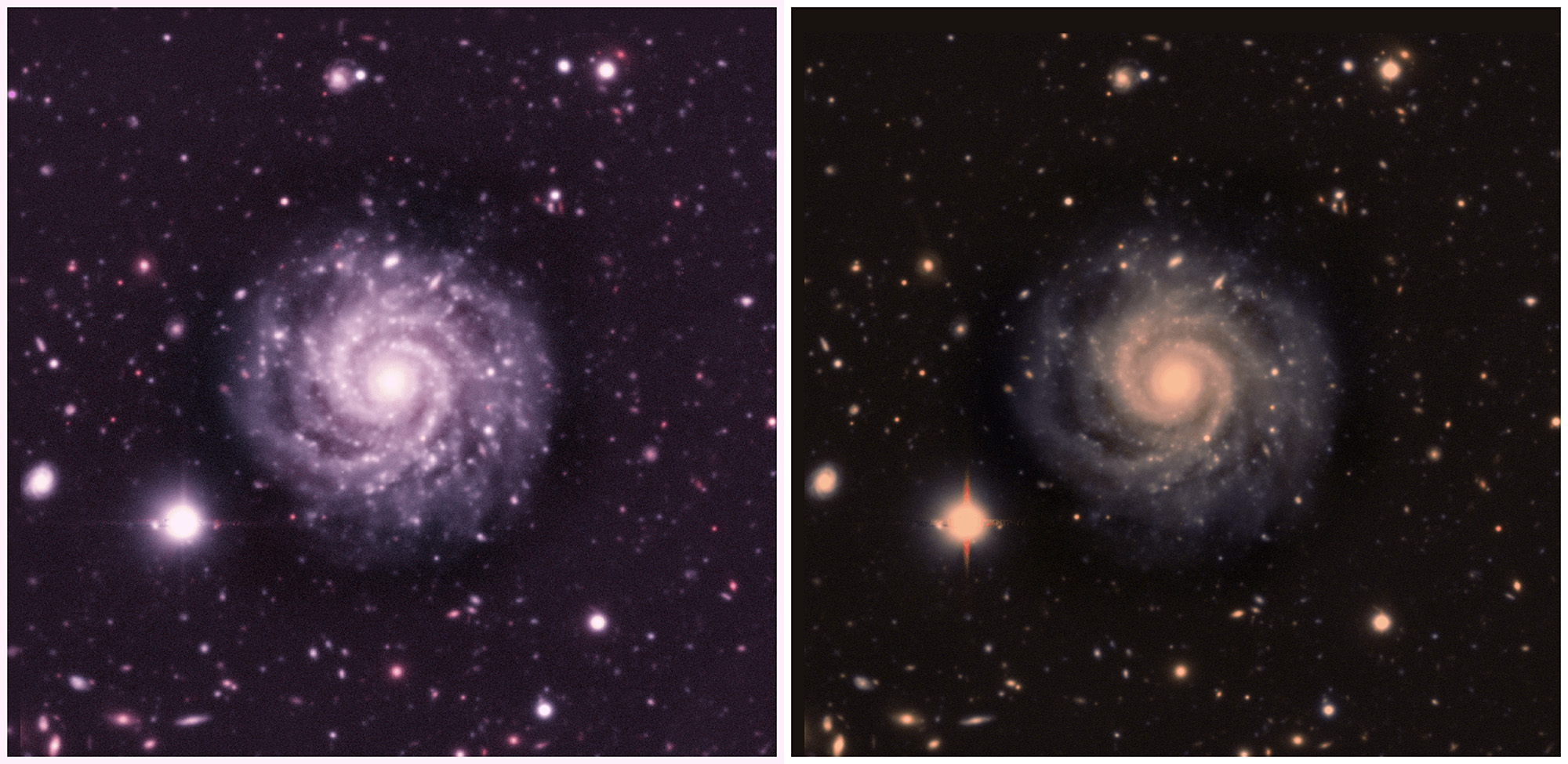Same Galaxy, Many Colors, Multiple Messages
You may be wondering, is my image correct? Keep in mind there’s more than one way to correctly construct an image. In fact, there are many ways to create an image that will look quite different that correctly communicates a science message and may involve different choices of filters, chromatic ordering and color balancing. As long as you follow the three steps outlined on the previous page, an image would be considered “correct”.
Below are two different images of UGC12635 made using different filters, correct chromatic ordering sequences, and color balances. It’s important to read the caption for each image to better understand how color is being used to communicate an astronomical message. Compare how these images look to your image of UGC12635.

Caption (for left image): The concentrated knots and clumps of star formation UGC 12635’s spiral arms are neatly shown. Filters used: u, g, r, and i. Data are obtained from the HSC-SSP and CLAUDS Surveys.
Caption (for right image): The wispy blue spiral arms of the face on spiral galaxy UGC 12635 contrast with the very distant red galaxies dotted across the whole field of view. Filters used: g, r, i, z, and y. Data are obtained from the HSC-SSP and CLAUDS Surveys.
Please answer all questions before continuing to the next page.
